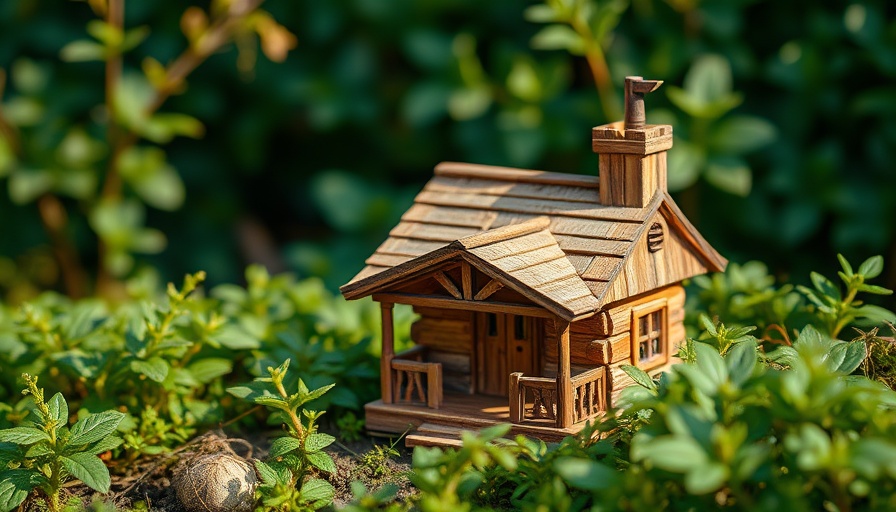
Unlocking the Potential of Wooden Outdoor Structures
Wooden outdoor structures are rapidly emerging as a cornerstone in residential and commercial landscapes, offering more flexible and innovative uses beyond mere storage. These versatile buildings find a place across various environments—backyards, educational institutions, farms, construction sites, and even corporate settings. As professionals in construction and urban planning continue to explore sustainable concepts, the adaptability and aesthetic appeal of wooden structures shine through as practical solutions.
Why Choose Wooden Structures?
One remarkable advantage of wooden outdoor buildings is their ease of installation. Most designs are prefabricated, facilitating quick setups that disrupt surroundings minimally. Unlike the often lengthy timelines associated with brick or concrete construction, wooden structures can be placed swiftly, ready for immediate use. This not only enhances productivity for those managing construction projects but also suggests significant savings in both time and resources, benefitting property developers focusing on rapid turnaround.
Home and Garden Solutions
Utility sheds are an excellent choice for homeowners looking to combat clutter while providing a safe place to store tools and garden items. These sheds come in varying sizes, designed to accommodate everything from larger equipment like lawnmowers to small hand tools. Strategically placing a shed near the garden enhances accessibility, ensuring that tools are on hand while minimizing disruption in your backyard space.
Comfort and Security for Workers
In sectors like construction and facility security, wooden guard houses fulfill essential needs for comfort. Guard houses serve as resting points for personnel, particularly on work sites where exposure to the elements is a concern. A well-constructed wooden guard hut offers a sturdy shelter that can be customized to provide a warm environment during winter months, facilitating smoother operations and a happier workforce. Investing in these structures not only showcases care for employee welfare but enhances overall site security.
Creating Play Spaces for Children
Wooden playhouses have become staples in family gardens, catering to children's imaginative play. Durable and resistant to harsh weather, these houses offer a safe environment for young ones to explore creatively. Parents often appreciate the fact that these structures are free from the risks associated with plastic toys, opting for quality wooden designs that can withstand years of use and can be refurbished as needed.
Flexible Spaces for Work and Guests
Innovative uses for wooden structures include converting wendy houses into offices or guest rooms, effectively maximizing space in small yards. With the addition of windows, doors, and even electrical fittings, these compact buildings become functional workspaces or cozy retreats that cater to diverse needs. The rise of remote working further propels the demand for such alternatives, allowing homeowners to cultivate beautiful, multifunctional outdoor spaces that support both work and leisure.
Budget Considerations When Choosing Wooden Structures
Prices vary significantly based on size, material quality, and finish for wooden outdoor structures. Before committing to a purchase, it’s crucial to assess your specific needs and budget. Understanding the intended use—whether temporary or more permanent—can guide decision-making and ultimately ensure satisfaction with the investment. It’s advisable to compile a list of available options, compare pricing, and seek the best fit for your envisioned project.
Future Trends in Wooden Outdoor Structures
As urban planning and construction technology evolve, the demand for sustainable building materials continues to rise. Wooden outdoor structures align well with green building initiatives, offering both environmental benefits and commercial opportunities. Property investment strategies increasingly favor sustainable options, and those in the real estate market should consider how these wooden structures could add value to their portfolios.
Final Thoughts
Wooden outdoor structures represent far more than mere utility; they’re a statement of practicality and sustainability in today’s evolving property market. From providing much-needed storage solutions to serving as creative play areas or versatile workplaces, they cater to various aspects of modern living. Whether you are a homeowner, property investor, or construction professional, exploring the options for wooden structures can significantly enhance both functionality and aesthetic value in your projects.
As you consider how to integrate wooden structures into your plans, ask yourself how these multifunctional spaces could meet your needs and contribute to a sustainable, efficient lifestyle.
 Add Row
Add Row  Add
Add 




Write A Comment